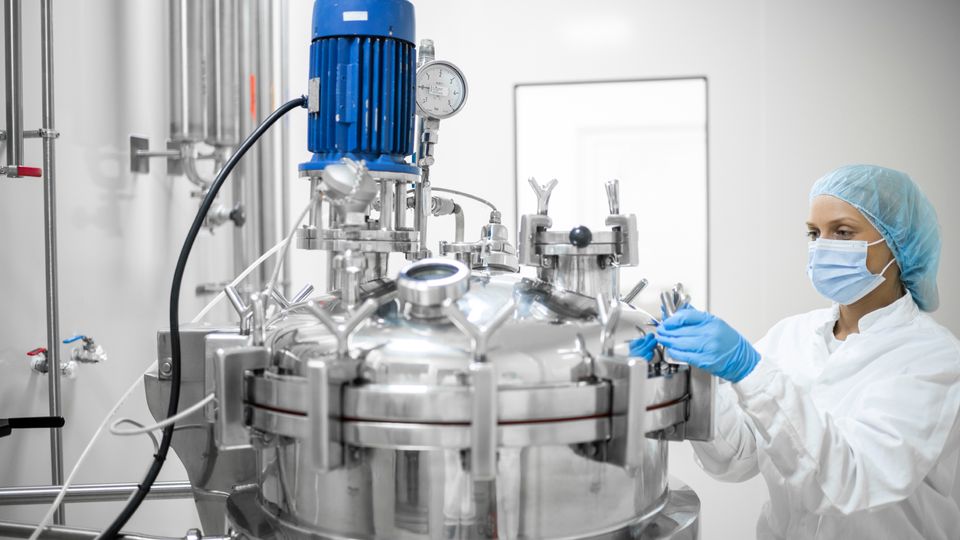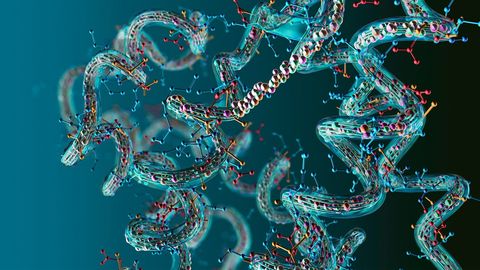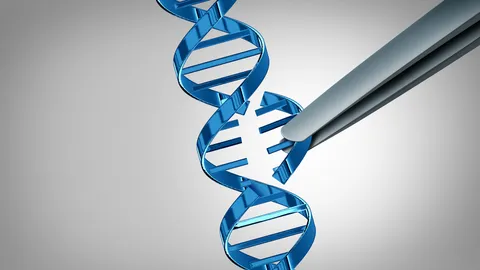Purification Technologies Advancing Downstream Processing of Biopharmaceuticals
Diversification of next-generation biopharmaceuticals calls for new purification technologies and protocols.

Complete the form below to unlock access to ALL audio articles.
The production of novel biopharmaceuticals has grown exponentially since the approval of recombinant human insulin in 1982.1 This growth, coupled with the increasing complexity of biotherapeutics, has presented new challenges in downstream processing.
Newer types of biopharmaceuticals, such as antibody-drug conjugates, bispecific antibodies and cell and gene therapies often bear the promise of treating previously untreatable conditions. These therapies have had life-changing impacts on many patients, like Victoria Grey, the first patient to receive a CRISPR cell-based gene therapy for sickle cell disease.
The surge in biopharmaceutical diversity has been driven by technology advances and our improved understanding of disease mechanisms; however, processes for isolating and purifying biologics are struggling to keep up.
“The design of next-generation therapeutics – fueled by next-generation sequencing, artificial intelligence and modern synthetic biology – is advancing at a speed that is much greater than the growth rate of bioprocess technologies,” Dr. Stefano Menegatti, associate professor at North Carolina State University, told Technology Networks.
This article explores some of the technologies and workflows aiming to enable the more efficient and cheaper purification of biopharmaceuticals.
New ligands expand the bioprocess “console board”
Purification methods can vary drastically depending on the product. For monoclonal antibodies (mAbs), purification typically involves protein A chromatography, which leverages the specific binding affinity of a protein-based ligand (protein A) with the Fc region of antibodies.
“Conventional protein-based affinity ligands have brought many life-saving products to clinics, chiefly mAbs and the first cohort of viral-vectored gene therapies,” said Menegatti. “The high affinity of protein ligands for the target product enables excellent binding capacity and selectivity, which translates into high product purity.”
However, the high binding strength of traditional protein-based ligands can be a double-edged sword, imposing the use of harsh conditions to recover the product. This can end up harming the integrity of the final therapy.
“Additionally, protein ligands are expensive and laborious to produce, since they must be expressed recombinantly and purified themselves,” explained Menegatti. There are also limited options to reduce costs by reusing ligands, “since the cleaning conditions required by regulatory agencies can lead to ligand degradation and leaching of immunogenic ligand fragments into the product mainstream.”
New ligand development and resin design is a major focus for improving biopharmaceutical purification processes. Menegatti and colleagues have developed a portfolio of affinity peptides for purifying mAbs and viral vectors for gene therapy and vaccines.
Discussing the benefits of peptide-based ligands, Menegatti said, “Firstly, they exhibit excellent binding selectivity but a moderate binding strength, enabling the recovery of highly purified product under mild elution conditions, which safeguard product integrity and activity. Additionally, their amino acid composition and conjugation density on chromatographic substrates can be engineered to enable the high binding capacity as well as the stability to caustic cleaning conditions required by pharmaceutical industry users. Finally, their synthesis using established methods enables their mass manufacturing at a fraction of the cost of their protein counterparts.”
Menegatti and colleagues have engineered ligands whose product-binding activity is controlled in a rapid on/off fashion by exposure to light at defined wavelengths or cations of the second group (calcium and magnesium). These ligands have been used to purify labile blood coagulation factors,2 therapeutic enzymes and viral vectors for gene therapy.3
The need for new affinity-based purification technologies will increase as new therapies come to the forefront. This is likely to include a need for ligands that can work in negative mode, whereby the ligands capture the impurities while letting the product flow through unbound, a concept coined by Menegatti and colleagues, “flow-through affinity chromatography”.4
Processes will need to be adapted for more complex modalities to ensure scale and efficiency are maintained. “Current processes for the purification of gene therapies are based – with minor adjustments – on the mAb platform, which is not adequate for products like viral vectors and ribonucleoproteins, whose complexity is significantly higher than that of mAbs,” Menegatti said.
“We believe that the purification of next-generation biologics will greatly benefit from the rational combination of novel affinity adsorbents that operate in positive and negative modes: this expanded bioprocess ‘console board’ will provide superior orthogonality in the separation of both process- and product-related impurities, thereby delivering medicines with highly defined critical quality attributes as well as superior quality, potency, efficacy and safety,” explained Menegatti.
What about the downstream processing of biologics beyond antibodies?
For a long time, the biopharmaceutical industry was dominated by proteins, and purification equipment was originally designed with this in mind. Using such equipment for purifying newer therapies like mRNA vaccines comes with certain limitations and compromises.
In RNA purification, a combination of filtration and chromatography techniques is typically used. “Usually, there are one or two chromatography steps involved, although I have seen processes without any chromatography purification as well (solely by tangential flow filtration),” Dr. Zoltán Kis, senior lecturer (assistant professor) at the University of Sheffield, told Technology Networks.
Commonly used chromatographic techniques for the purification of RNA include:
- Oligo-dT affinity chromatography: Captures mRNA through hydrogen bonding between the mRNA polyA tail and the oligo-dT ligands.
- Anion exchange chromatography: Captures RNA based on the negative charges of the phosphate-sugar backbone.
- Cellulose-based chromatography: Operated in flow-through mode to capture undesired immunogenic double-stranded RNA impurities.
- Hydrophobic interaction chromatography: Exploits the differences in hydrophobicity between RNA and its impurities.
- Ion-pair chromatography: Separates molecules based on charges and hydrophobicity.
One of the main challenges in the purification of RNA is the removal of product-related impurities, such as double-stranded RNA (dsRNA), which can be highly immunogenic. “The presence of dsRNA, even at low amounts/concentrations, is not desired, especially for certain therapeutic applications (e.g., protein replacement therapy),” said Kis.
Additional challenges can arise in the purification of the final drug product depending on the formulation. “For drug product purification (mRNA-LNPs [lipid nanoparticles]), maintaining the stability of the lipid nanoparticles is the main challenge (e.g., preventing the growth of the mRNA-LNPs, by merger),” explained Kis.
Research has found that purification by filtration can impact the stability of the mRNA.5 “Recent studies and data from our work indicate that tangential flow ultrafiltration/diafiltration can slightly alter the surface of the mRNA-LNP by creating so-called bleb compartments. Interestingly, these blebs on the mRNA-LNP actually enhance protein expression in cultured cells.”
To overcome these challenges, Kis and colleagues are combining experiments and computer modeling to map out how to run the production process efficiently to improve the product’s critical quality attributes. For this, the researchers embrace the quality by digital design (QbDD) framework, which utilizes data-driven, mechanistic models to define and optimize a manufacturing design space.6
To address the challenges of not having optimal equipment for mRNA purification, Kis and colleagues are building equipment for “mRNA enzymatic synthesis, drug substance purification, mRNA encapsulation into LNPs and mRNA-LNP purification,” said Kis. “All of these are being incorporated into a single piece of equipment that we call RNAboxTM.”
RNAbox is being designed as a fully automated, compact RNA manufacturing process and is established based on the QbDD framework. It is set to build on the “vaccine revolution” experienced during the COVID-19 pandemic and is designed to overcome scientific hurdles that resulted in poorer countries facing devastating vaccine inequity.7
“We have also developed a process that allows re-use/recycle of the high-cost raw materials to make more of the same mRNA product per amount of raw material input, while maintaining high quality (or even improving quality). Since raw materials are the major cost driver at high scale, this would yield substantial cost reduction,” Kis explained.
“This, combined with the RNAbox, will make mRNA production more easily accessible and transferable, aiding and accelerating the development and manufacturing of low-cost and high-quality mRNA vaccines and therapeutics for the prevention and treatment of a wide range of diseases.”
Harmonizing speed and scale with quality and safety
As biopharmaceuticals continue to gain traction in clinical practice, the demand for scalable and rapid bioprocessing solutions continues to rise. Reducing the costs to produce these therapies and finding ways to integrate processes to work continuously remain areas of investigation.8
“Many barriers remain, chiefly harmonizing the speed of purification with the speed and accuracy of process analytical technologies (PATs),” said Menegatti. “Most analytics that quantify the critical quality attributes of biotherapeutics are currently off-line, which means that bioprocesses ‘run blind’, often resulting in failed production campaigns (which have significant repercussions on the cost and availability of advanced therapeutics). A new generation of PATs will be needed to support purification processes and ensure that biomanufacturing operations can be tracked and adjusted in real time to ensure the quality and safety of the purified products.”
Computational models could play a vital role in meeting the need for innovative, cost-effective purification strategies. “I also foresee the use of computational models to guide the development and operation of more efficient RNA manufacturing processes – we are also working on this (also developing soft-sensors for process monitoring and digital twins for process control),” concluded Kis.






